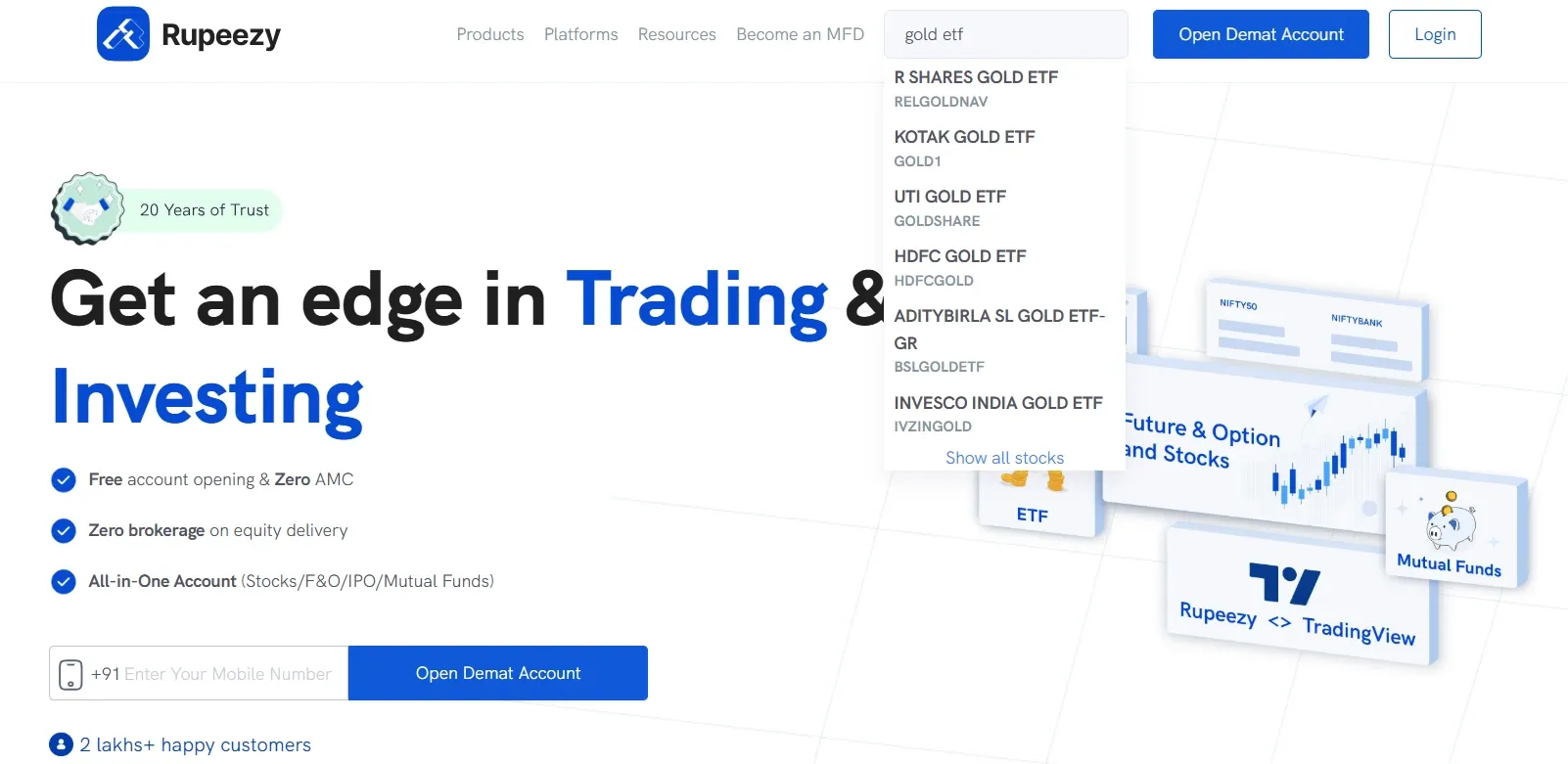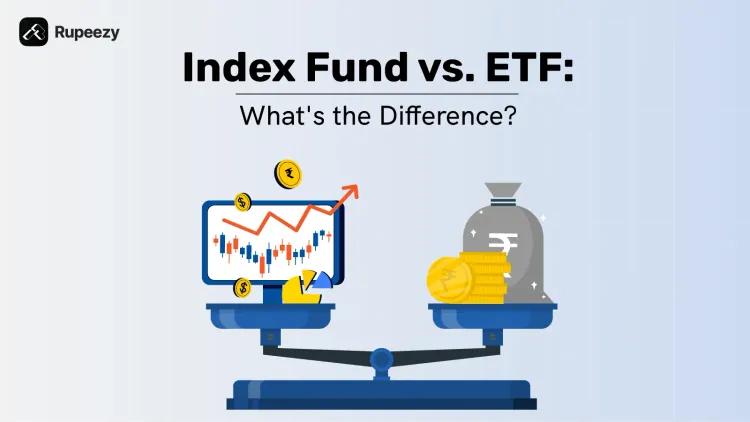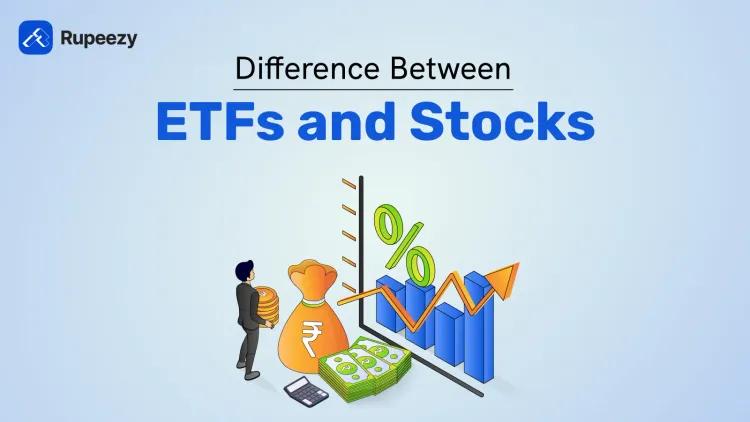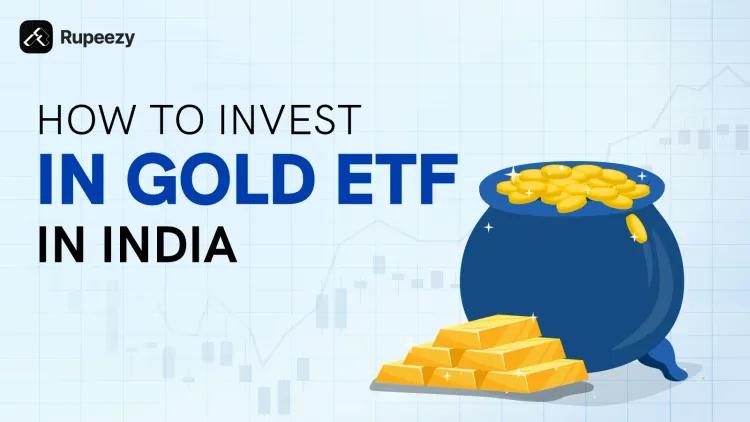Gold BeES vs Gold ETF: Meaning, How It Works, Taxation


00:00 / 00:00
Every Indian household holds gold as a traditional investment, a safe avenue to save and invest, and a cultural symbol of prosperity. Gold has not disappointed, either, in serving as a hedge against inflation and a real storehouse of value, a scarce, high-quality commodity used worldwide by governments to store wealth.
Gold can also be purchased in digital form. Gold ETFs and Gold BeES ETF are popular modes to invest in gold without the hassle of physical purchase and upkeep.
This article will discuss the difference between gold ETF and Gold BeES.
Gold BeES Overview
Gold BEES ETF is an exchange traded fund. There are many Gold ETFs from different AMCs available on stock exchanges, Gold BEES is one of the oldest and first gold ETFs being launched in India and the most traded gold ETF as well. Let us take a look at Gold BEEs in detail.
Gold BeES stands for Gold Benchmark Exchange Traded Scheme (ETF), is a financial instrument that enables investors to invest in gold in electronic mode through the stock exchange. Gold BeES is India’s first gold ETF. Each unit tracks the price of physical gold in the market.
With Gold BeES, investors can easily invest in gold without going through the hassle of buying and safekeeping physical gold. BeES has better liquidity as units can be traded on stock exchanges during market hours. Investors can buy or sell units instantly using their demat and trading account at prevailing market price.
Gold BeES is India's oldest and largest gold ETF. It's an actively traded, open-ended ETF scheme with no lock-in period or maturity. Investors can purchase even one unit of GOLDBEES on the NSE/BSE. Each unit of the ETF roughly equals 0.01 gram of gold.
Nippon Life Asset Management Ltd. (AMC) runs Nippon India ETF Gold BeES, also known as GOLDBEES. Nippon India Mutual Fund, formerly Reliance Mutual Fund, offers this gold exchange-traded fund (ETF).
Here are details of Nippon India ETF Gold BeES:
Inception Date: Mar 8, 2007
AUM: Rs. 15,247.9 Cr
Fund Manager: Vikram Dhawan (Managing Since Feb 2022)
Benchmark: Domestic Price of Gold
Total Expense Ratio: 0.79
The investment objective of Nippon India ETF Gold BeES is to provide returns that, before expenses, closely correspond to the returns provided by Domestic price of Gold through physical gold.
Name | Return 1Y | Return 3Y | Return 5Y | Return since Inception % |
Nippon India ETF Gold BeES | 20.91% | 13.79% | 11.50% | 11.20% |
Domestic Price of Gold | 20.95% | 14.98% | 12.55% | 12.27% |
(Returns as of November 2024)
How does Gold BeES Work?
Fund managers buy physical gold in the form of coins or bars of specific purity as per international standards. The units of Gold Bees ETF are denominated in the quantity of gold e.g. 1 unit of ETF equals 0.01 gram of gold.
NSE CODE: GOLDBEES
Any investor can buy minimum of one unit of Nippon India ETF Gold BeES which is approximately equal to 0.01 gram of gold on NSE/BSE.
The fund invests exclusively in physical gold with 99.5% purity.
Benefits of Investing in Nippon India ETF Gold BeES:
Cost efficient: The cost or expense ratio in Gold BeES is usually much lower compared to additional charges or markup incurred while buying physical gold. Moreover, there is a 3% GST payable on physical gold purchase, and labour cost on gold attracts 5% GST.
Transparency: The price of Gold BeES is transparent and in line with market rates. There is no ambiguity on price of gold as against buying jewellery or coins.
Safety: Gold BeES is a digital security, investors have no concerns about the safety or theft issues. The investment can be held for as much time in a demat account without worrying about the physical location of the asset.
Affordable: Investors can buy even a single unit of Gold BeES equal to 0.01 grams of physical gold with a small investment of Rs 62.90 (as of 19 Nov 2024) as against physical gold with higher denomination.
Convenience: Gold BeES units can be bought or sold easily on NSE & BSE during trading hours anywhere anytime.
Gold ETF Overview
Gold ETFs are a category of Exchange Traded Funds that track the price of physical gold in the domestic market. Here a single unit of the Gold ETF is equal to 0.01 gram of gold. Investments made in Gold ETFs are backed by physical gold of very high purity.
There are various Gold ETFs from different AMCs available for investment on stock exchanges. Investors can choose Gold ETF schemes based on fund track record, expense ratio, and how closely a fund tracks the price of gold.
Below is a list of the best Gold ETFs available in the market to consider for investment:
Fund Name | Return 1Y | Return 3Y | AUM (Rs. Cr) | Expense Ratio |
21.12% | 14.01% | 5531.3 | 0.50% | |
20.93% | 13.97% | 4911.9 | 0.55% | |
20.98% | 13.94% | 972.1 | 0.54% | |
20.67% | 14.3% | 172.3 | 0.41% | |
20.67% | 13.9% | 1520.1 | 0.47% | |
20.74% | 14.03% | 1068.1 | 0.54% | |
20.48% | 13.73% | 6615.4 | 0.59% | |
SBI Gold ETF | 20.4% | 13.85% | 5977.7 | 0.65% |
20.45% | 13.95% | 125 | 0.55% |
(Returns as of November 2024)
Gold ETF vs Gold BeES: Taxation
Gold BeES and Gold ETFs are primarily Gold Exchange Traded Funds and are treated the same for taxation. In Union Budget 2024, some changes were announced in holding period and tax treatment of Gold ETFs, let's take a look:
Short Term Capital Gains (STCG)
The Holding Period of 12 Months has been introduced in Budget 2024. Previously Gold ETF capital gains within three years of purchase were deemed as short term.
Short term capital gains (STCG) accrued from the sale of units within 12 months of purchase is added to income and taxed at income tax slab rate.
Long-Term Capital Gains (LTCG)
Capital gains from selling Gold ETF units after 12 months are taxed at 12.5%. The indexation benefit previously applicable has been removed.
Previously, LTCG tax on capital gains accrued from selling Gold ETF units held over 3 years was 20% with indexation benefit.
Gold BeES vs Gold ETF: Risk Factors to Consider
Gold ETFs invest in specific asset class and hence are subject to market risks associated with gold price movements and various factors impacting gold prices e.g. state of economy, currency movements, geo-political factors, demand, adverse global economic conditions etc.
Investors must look at their risk appetite, investment goals and time horizon. A 5%-10% allocation in gold can offer benefits of diversification, hedge against inflation, and divergent price movements in various asset classes.
Gold ETFs are regulated by SEBI and fund houses offering ETFs follow stringent regulations as applicable to all other asset classes. There is a mandatory periodic audit of physical gold purchases by fund houses towards Gold ETF investments.
Who Should Invest in Gold ETFs and BeES?
Gold ETFs are ideal for investors who want to invest in gold as an asset class but are skeptical to buy physical gold due to the storage inconvenience/no assurance on purity of gold and are also looking to get tax benefits. There is no markup, no making charges or wastage, thus ETFs are cost efficient as well.
Gold is considered a safe haven in uncertain times and has delivered returns over a very long term in various market cycles, investors looking to diversify their portfolio can invest in Gold ETFs.
Following are the benefits investors can take advantage of by investing in Gold ETFs:
Guaranteed purity of the gold and each unit of ETF purchased is physical gold of high purity.
Gold ETFs are transparent and track real-time gold prices.
Gold ETFs are listed and traded on the stock exchange.
Gold ETF is a tax efficient way to invest in gold as capital gains earned >12 months of holding are treated as long term capital gains.
Gold ETF holding do not attract additional taxes such as wealth tax, STT, VAT, sales tax etc.
Secure electronic holding in demat, no locker charges.
ETFs are eligible as collateral for loans with some financial institutions.
There is no entry and exit load on Gold ETFs.
How to Invest in Gold ETFs or Gold BeES?
Visit Rupeezy.in, go to ‘Watchlist’ and search for GOLDBEES or Gold ETFs or your choice of particular ETF.
View and analyse the ETFs for metrics e.g. performance, total assets, expense ratio, trading volume, etc.
Simply buy listed ETFs as per prevailing market price by placing a Buy Order. The process is the same as buying any listed stock.

Conclusion
To conclude, gold is a viable asset class to add to your portfolio. Gold BeES and Gold ETFs offer a convenient online mode to invest in gold within minutes without the hassle of buying, negotiating, and safekeeping physical gold. You can buy Gold BeES and Gold ETFs offered by reputed fund houses from your demat and trading account at the prevailing gold price. Gold ETFs buy physical gold of highest purity overseen by SEBI regulations. Visit Rupeezy and invest in the best Gold ETFs and Gold BeES today.
FAQs
Q. How many Gold BeES is one gram gold?
Each unit of Gold BeES ETF is equal to roughly 0.01 grams of physical gold, available for buying and selling on stock exchanges.
Q. Is buying Gold ETF better than physical gold?
Buying physical gold involves additional markups such as making charges, wastage, and additional taxes such as VAT, STT, etc. Also, physical gold involves storage costs and effort.
Q. Which ETF is best for gold?
You can consider top performing Gold ETFs such as:
ICICI Prudential Gold ETF
Kotak Gold ETF
Aditya Birla Sun Life Gold ETF
LIC MF Gold ETF
UTI Gold ETF
Q. Can I sell Gold ETF anytime?
Yes, Gold ETFs are traded on stock exchanges like shares and can be bought and sold at prevailing prices during market hours.
Check Out These Related Articles |
The content on this blog is for educational purposes only and should not be considered investment advice. While we strive for accuracy, some information may contain errors or delays in updates.
Mentions of stocks or investment products are solely for informational purposes and do not constitute recommendations. Investors should conduct their own research before making any decisions.
Investing in financial markets are subject to market risks, and past performance does not guarantee future results. It is advisable to consult a qualified financial professional, review official documents, and verify information independently before making investment decisions.

All Category










